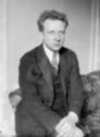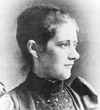The new planet known as Gliese 581 c (L) orbiting a red dwarf star
This exoplanet - as astronomers call planets around a star other than the Sun - is the smallest ever found up to now and it completes a full orbit in 13 days. It is 14 times closer to its star than the Earth is from the Sun. However, given that its host star, the red dwarf Gliese 581, is smaller and colder than the Sun - and thus less luminous - the planet nevertheless lies in the habitable zone, the region around a star where water could be liquid! The planet's name is Gliese 581 c.
The discovery was made thanks to HARPS (High Accuracy Radial Velocity for Planetary Searcher), perhaps the most precise spectrograph in the world. Located on the ESO 3.6-m telescope at La Silla, Chile, HARPS is able to measure velocities with a precision better than one metre per second (or 3.6 km/h)! HARPS is one of the most successful instruments for detecting exoplanets and holds already several recent records, including the discovery of another 'Trio of Neptunes'
The detected velocity variations are between 2 and 3 metres per second, corresponding to about 9 km/h! That's the speed of a person walking briskly. Such tiny signals could not have been distinguished from 'simple noise' by most of today's available spectrographs (video).





No comments:
Post a Comment